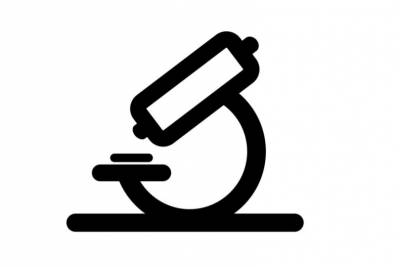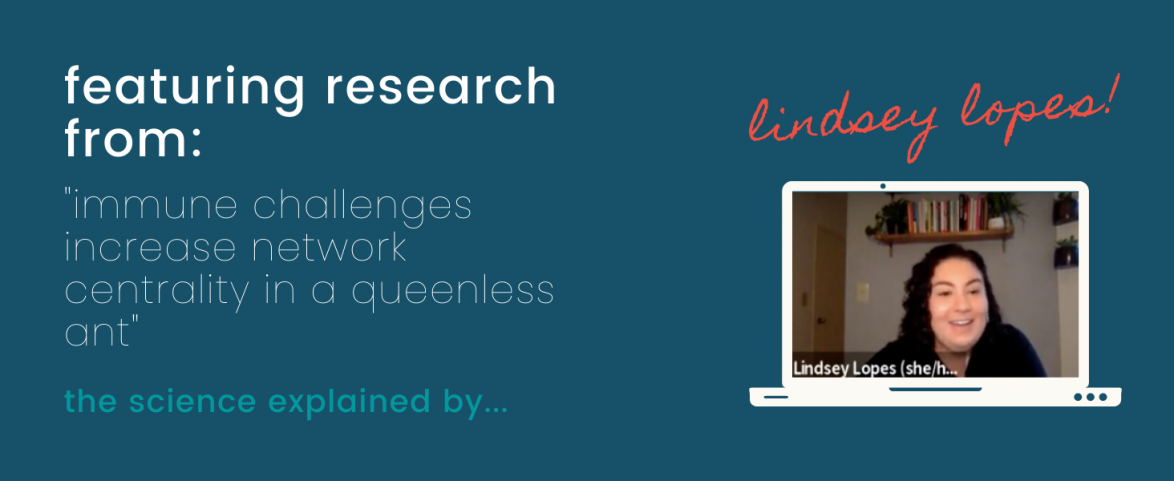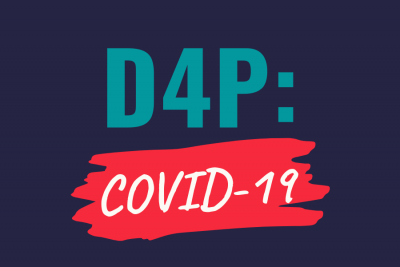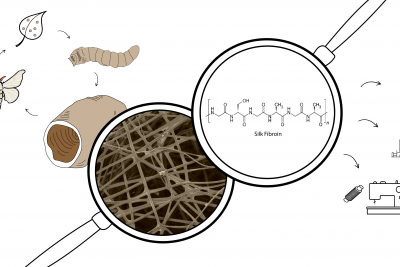How do ants respond when individuals in their colony become sick?
As we enter the third year of the COVID-19 pandemic, we humans have had to alter our own social behavior to reduce the spread of disease. Similarly, when illness pops up in ant colonies, ants, too, will alter their own social behaviors to combat the spread of disease. Interestingly, there is no single way ants respond to infectious disease — some species increase social contact with infected individuals, and other species reduce contact with infected individuals. In this talk, Lindsey reviews a paper from Yuko Ulrich’s group that explores what the decision process looks like for clonal raider ants when it comes to the presence of infectious illness in their colonies.
Materials

Experimental Evaluation
using empirical investigation to establish patterns, test for true differences, or test hypothetical models
Paper summary
In this paper from Yuko Ulrich’s lab, the researchers study what happens to the social network of an ant colony when an ant gets sick. They study a specific species of ant, the clonal raider ant, which is an ant species that is easy to keep in the laboratory and perform experiments on. They break down their big research question into two smaller questions-
(1) How do sick ants interact with other ants in the colony?
After activating an ant’s immune system using a bacterial protein that induces an immune response, similar to a vaccine in humans, they put that ant into a colony with other healthy ants and recorded all of the interactions between ants that happened. They found that while the sick ants moved around less than healthy ants, sick ants do not socially isolate from the healthy ants in the colony and actually spend more time in physical contact with healthy ants.
(2) Do sick ants get groomed more than healthy ants?
Ants often groom other ants in their colonies, a process known as allogrooming, and allogrooming is one way that ant colonies protect against disease. The authors looked at the recordings of colonies with sick and healthy ants, this time looking for how much time healthy ants spent grooming the sick ants. They found that, overall, sick ants were groomed for more time than healthy ants. They also tested what happens if sick ants are socially isolated- do they survive similarly to sick ants that are in a colony with other healthy ants? To do this, they infected ants with a fungus that is known to be a deadly pathogen, and set up experimental groups of isolated sick ants and sick ants with a few healthy ants. They looked daily at the survival of all ants, and found that isolated sick ants die faster than sick ants that are grouped with healthy ants.
From all of these experiments, the authors conclude that in the clonal raider ant, activation of the immune system does not lead to these sick ants becoming socially isolated. In fact, the sick ants have increased physical contact with healthy ants, and healthy ants spend more time grooming these sick ants. These physical contacts, and this grooming, is likely beneficial to the survival of the ant, as sick ants that are isolated die sooner than sick ants that are able to have contact with healthy ants.
Go deeper
Questions for Learners and Discussion Points for Educators
- What are some benefits of this “care-taking” strategy that clonal raider ants use when a member of their colony gets sick? What types of problems could this strategy lead to?
- Pros: Increased survival for sick, might build resistance in healthy ants if they are exposed to small amounts of the pathogen
- Cons: Increased chance of disease spreading, waste of resources if sick ant dies
- What factors might influence the strategies of social immunity that ant colonies use to protect against disease?
- How genetically similar are individuals in the colony?
- What is the severity of the pathogen? How infectious is it?
- How many ants are sick?
- How might ants detect a sick ant in their colonies?
- What senses are used during ant communication?
- How might ant behavior change?
About Our D4P Fellow
Lindsey Lopes (she/her), Graduate Student @ Rockefeller University
Lindsey is a Ph.D. student at The Rockefeller University in the Laboratory of Social Evolution and Behavior. She studies how ants communicate with each other using chemical signals. She is interested in how the brain is able to process these chemicals and coordinate the ant’s behavioral response. Before this, she was a student at Haverford College and University of Pennsylvania. She enjoys playing with her cats, baking, reading, and doing yoga when she is not in the lab.










